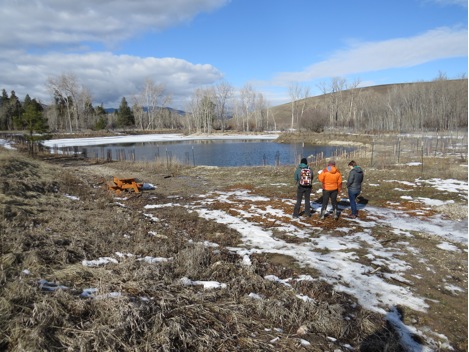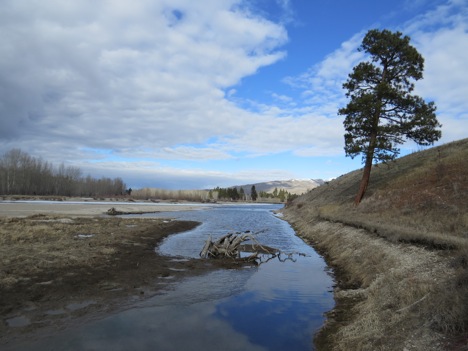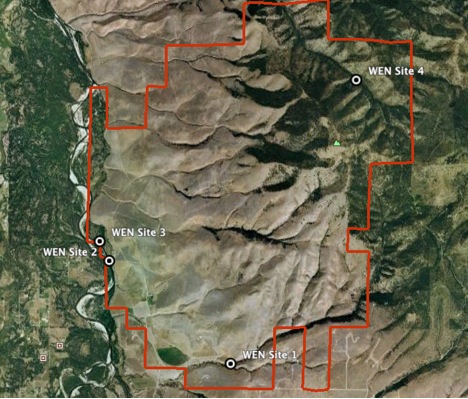
Watershed Education Network Visit
Block title

Three staff from the Watershed Education Network (WEN) visited MPG Ranch on February 8th. We toured the ranch to find sites suitable to measure water quality and flow rate along the Bitterroot River and in some of the streams on the ranch.
The team from WEN investigated three possible sites on the Bitterroot side of the ranch with the possibility of a fourth site in the Boondocks when winter breaks. Site one is along Lower Woodchuck Creek, site two is along the Bitterroot River near the Club House, and site three is in the newly established wetland, also near to the Club House. The Boondocks site four is in Davis Creek but at the time of the visit the roads did not allow us to make it there.
WEN will monitor and test for different standards depending on the site. An overview of the data to be collected is as follows: establish baseline water quality to determine long term trends; monitor riparian restoration progress; monitor changes and trends in streamflow; monitor wetland restoration; and monitor water quality trends due to ranch activities along property boundaries. WEN will test specifically for dissolved oxygen, pH, temperature, turbidity, conductivity, and flow. If possible WEN will also test for nitrates, phosphorous, pesticides, and herbicides. The last four items are grant funding dependent.

This photo is of WEN staff in Woodchuck Creek. They took GPS data and photos to identify research sites. Woodchuck Creek had only a few sites where the creek was deep enough for testing, though this will change in spring with an increase in flow.

This photo shows the group by the wetlands along the Bitterroot. Here they will monitor the progress of the newly established portion of the wetland. MPG restored an area that was used for a skeet shooting range by removing soil contaminated by lead shot. The water in the wetlands is nitrogen rich to encourage the growth of plants.

This photo shows where water enters the wetland from the Bitterroot River.

This photo shows the group at the site along the Bitterroot below the Club House.

The waypoints show the research sites proposed by the Watershed Education Network (WEN). The red line indicates the MPG Ranch boundary.



















